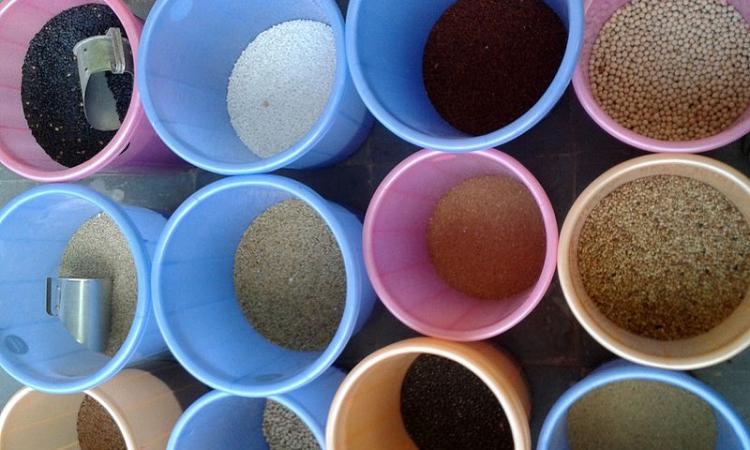
India has the highest national freshwater demand globally and 91 percent of our freshwater is used in the agriculture sector. Cereals account for over 50 percent of the dietary water footprint in India and represent a potential opportunity for reducing water use in Indian agriculture. After the green revolution, cereal production shifted from traditional cereals such as millet and sorghum, and towards higher yielding rice and wheat. Cereals are increasingly produced in the winter (rabi) season. The increase in cereal production over the last decades has had an impact on the local environment due to increased agricultural land area, fertiliser and water use.
To understand the relationship between water use and cereals in India better, a study titled More crop per drop: Exploring India's cereal water use since 2005 explores trends in cereal production, water use and water footprints of five major cereals (rice, wheat, millet, sorghum and maize) from 2005 to 2014. It combines governmental production and irrigation statistics with crop distribution maps to examine trends in annual water use for cereal production in India between 2005 and 2014.
A new online water assessment tool, Cool Farm Tool Water (CFTW), was used to calculate water use and derive seasonal state-level blue and green water footprints for rice, wheat, sorghum, millet and maize. The variability in water footprints is analysed for all states and seasons to understand the drivers of total water use. Changes to yields and cropping practices are identified to determine important factors for increased cereal production in India.
Findings of the study
The analysis indicates that between 2005 and 2014, the production of five dominant types of cereal in India increased by 26 percent. Cereal water footprints have declined due to higher yields for most crops and slightly lower rates of evapotranspiration. There has also been a shift in the area under production, away from the kharif (monsoon) and towards the rabi (dry) season, in which total water footprints for all cereals except rice are substantially lower (?33.4 percent to ?45.0 percent compared to kharif), but show a significantly higher dependency on ground and surface water.

The value of this study is two-fold. First, it provides a full assessment of production trends for the five major kinds of cereal in India for each year from 2005 to 2014 and links it to water use. Secondly, it uses updated seasonal water footprints, which demonstrate the potential for changes in cereal production practices to contribute to improved efficiency of water use in India.
Future pressures on scarce water resources may encourage the transition to cereals with lower irrigation dependency, particularly maize, but also sorghum and millet. In addition, increased emphasis on improving millet and sorghum yields would be of benefit to secure cereal production and reduce its overall water footprint. Enhancing maize, millet and sorghum production may reduce India's agricultural use of freshwater. Millet and sorghum yields are currently too low to ensure sufficient cereal supply.
Conclusion
India's agricultural system has achieved a substantial increase in cereal production without consuming more water over the period of 2005–2014 through improvements in crop productivity and shifting more production to the rabi season. As this has led to greater irrigation area, this strategy is of limited use in solving the water crisis in India while sustaining crop production. Reducing pressure on freshwater resources, alleviating unsustainable groundwater use and securing cereal production for food security require different solutions based on the growing season.
Overall, increasing maize production will help to sustain cereal production while minimising water use as it is less dependent on blue water, has high yields and can be cultivated during all growing periods in India. In addition, sorghum and millet can help reduce the dependency on freshwater but substantial investments in improving yields, for example through high yielding varieties, is crucial to maintain production levels.
The data provided in this study will enable decision makers in government, agriculture and food supply chains in India to understand the potential impact of interventions in crop type, cropping season and farming locations on water productivity and cereal production. The study can also contribute to future projections of per-capita water demand in India, a country where diets and agricultural production are undergoing a substantial transition.
The paper can be accessed here
/articles/understanding-water-footprint-cereals-india